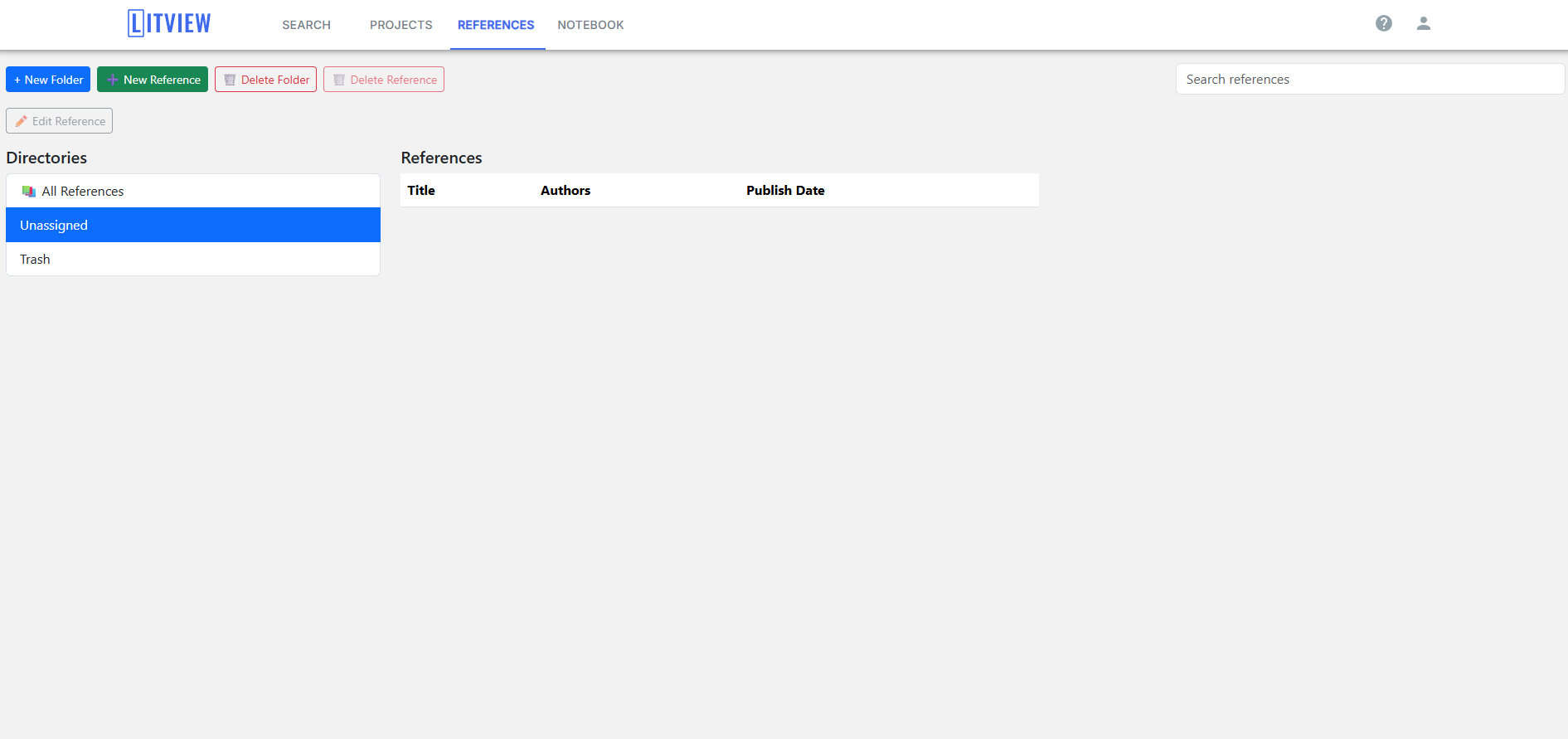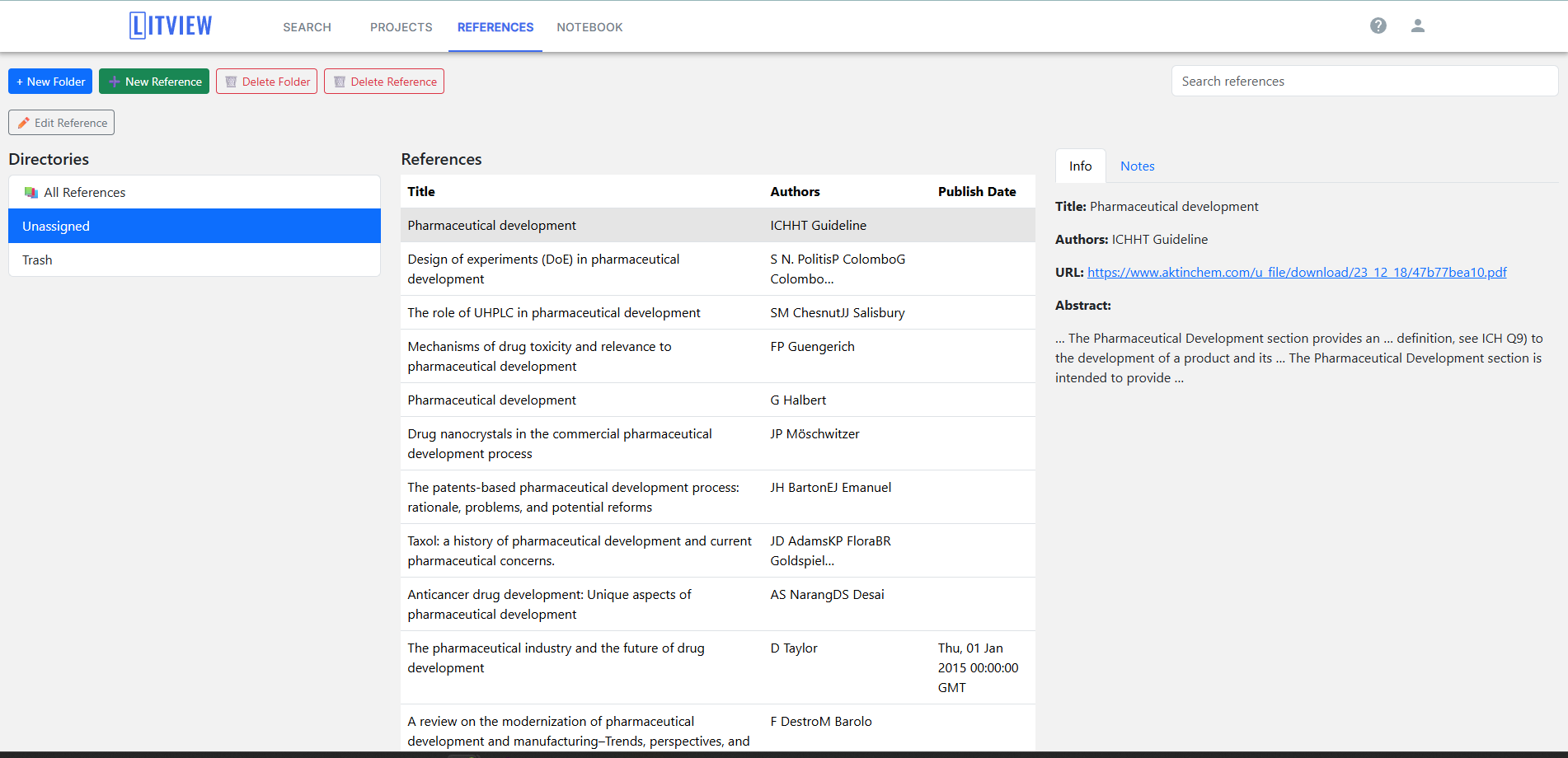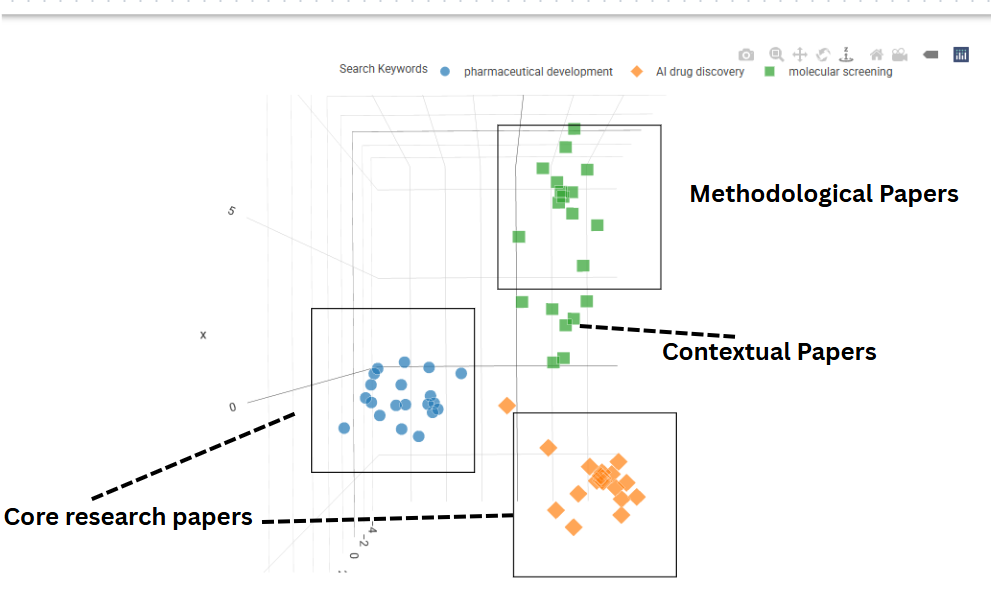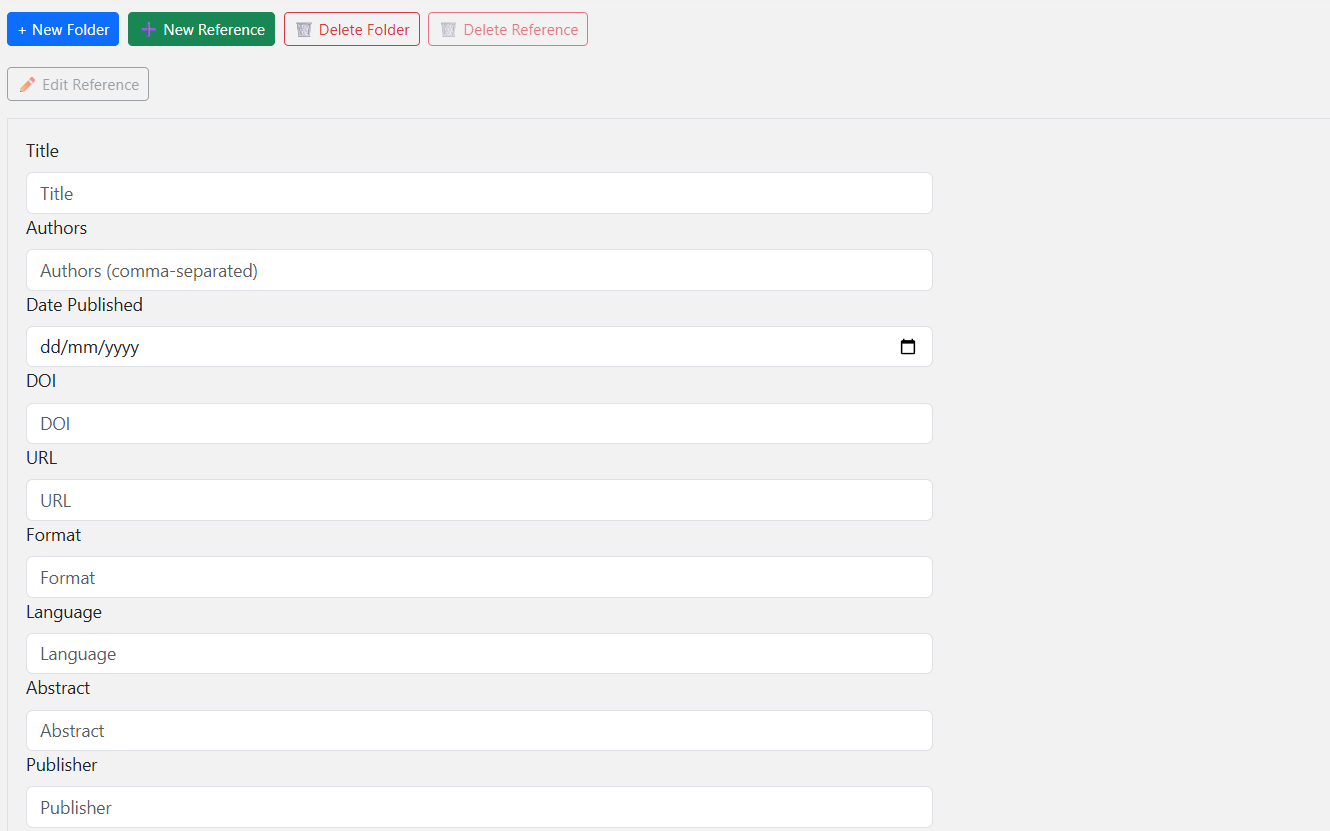References and Citations
LitView includes a comprehensive reference management system that rivals tools like Zotero. Transform your search discoveries into organized, citation-ready reference libraries with folder organization, and batch operations.
Understanding LitView’s Reference Manager

Reference Manager Overview
LitView’s References tab provides a complete reference management solution designed specifically for researchers who want seamless integration between literature discovery and citation management. Unlike external tools that require complex import/export workflows, LitView’s reference manager connects directly to your search results.
Key Capabilities
- Custom folder structure creation for organizing references
- Direct saving from search results to reference collections
- Drag-and-drop organization with intuitive interface
- Batch operations for multiple references simultaneously
- Trash system with reference recovery options
Interface Layout

Left Panel: Directory Structure
- Create and manage custom folder hierarchies
- Special directories: “Unassigned” and “Trash”
- Drag-and-drop folder organization
Center Panel: Reference Lists
- View references within selected directories
- Sort by title, authors, publication date
- Multi-select references for batch operations
- Search functionality within selected folders
Right Panel: Reference Details
- Complete citation information for selected references
- Real-time saving of reference updates
From Search Results to Reference Collections
Saving Articles from Search

Direct Save Workflow
- Perform search and analyze cluster results
- Click on relevant papers in the cluster visualization
- Use “Save to collection” button (+ icon) in the details panel
- Articles automatically appear in “Unassigned” directory
- Organize saved articles into appropriate project folders
Strategic Reference
Collection Based on cluster analysis insights, systematically save:

Core Research Papers
- Papers from the densest part of your main keyword cluster
- Foundational works that define your research area
- High-impact recent papers representing current knowledge
Methodological Papers
- Papers from methodology-focused clusters
- Cross-disciplinary papers providing applicable methods
- Validation studies supporting methodological choices
Contextual Papers
- Papers from secondary clusters providing important context
- Bridge papers connecting different research domains
- Background papers establishing broader research significance
Organizing Your Reference Library

Folder Structure Best Practices
Project-Based Organization
Main folder: Research Projects
- AI-Medical-Diagnosis
- Core-Literature
- Methodology
- Applications
- Literature-Reviews
- Systematic-Reviews
- Meta-Analyses
- Grant-Applications
- NSF-Proposal-2024
- NIH-Application
Thematic Organization
Main folder: Research Themes
- Machine-Learning-Methods
- Clinical-Applications
- Evaluation-Metrics
- Ethical-Considerations
Temporal Organization
Main folder: Research-Timeline
- Foundational-Work
- Recent-Developments
- Emerging-Trends
Reference Management Workflows

Creating New References
- Navigate to desired directory in reference manager
- Click “New Reference” button
- Fill in citation details in right panel fields:
- Title, Authors, Publication Date
- Journal/Conference, Volume, Issue
- DOI, URL, Abstract
- Custom fields for project-specific information
- Information saves automatically as you type
Quality Control and Reference Validation
Reference Completeness Check Ensure high-quality citations by verifying:
- Complete author information and publication details
- Accurate DOI and URL links to source materials
- Proper journal/conference names and formatting
- Abstract inclusion for comprehensive records
Duplicate Detection and Management
- Review references saved from multiple searches
- Identify potential duplicates through title and author matching
- Use reference details to verify uniqueness
- Merge or remove duplicate entries as appropriate
Quality-Graded Citation Selection
- Essential citations: Core papers from main research clusters
- Supporting citations: Papers from relevant secondary clusters
- Background citations: Papers providing necessary context
- Emerging citations: Recent work indicating future directions
Reference Manager Maintenance
Long-Term Reference Organization
Project Evolution Management As research projects develop:
- Create new folders for emerging research directions
- Archive completed project folders while preserving access
- Update reference organization to reflect evolving research focus
- Maintain connection between related projects through folder structure
Reference Collection Curation
- Regular review of reference collections for currency and relevance
- Update reference details with new information (citations, impact metrics)
- Expand reference collections through systematic follow-up searches
- Maintain quality standards through periodic reference validation
Backup and Recovery Systems

Trash and Recovery LitView’s built-in safety features:
- Deleted references move to “Trash” directory rather than permanent deletion
- Two-step deletion process: trash → permanent deletion
- Reference recovery capability from trash directory
Reference Preservation
- Maintain multiple organizational schemes for important references
- Use reference notes to preserve context and decision-making rationale
- Document reference collection methodology for institutional knowledge
- Regular review and updating of reference organization systems
Explore Troubleshooting and Support for common issues and solutions.